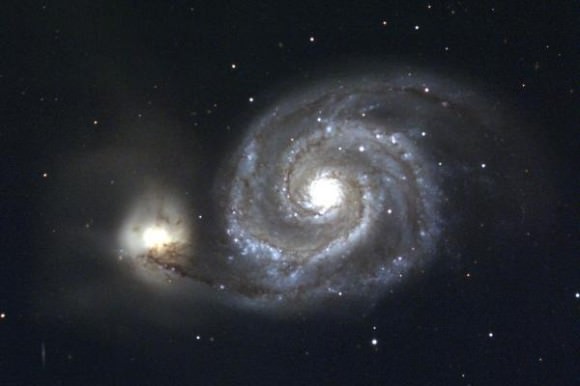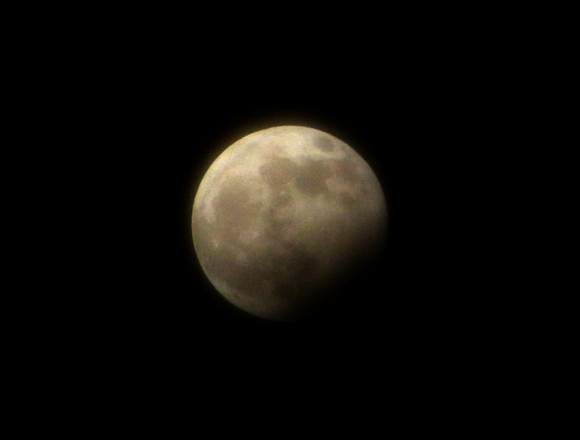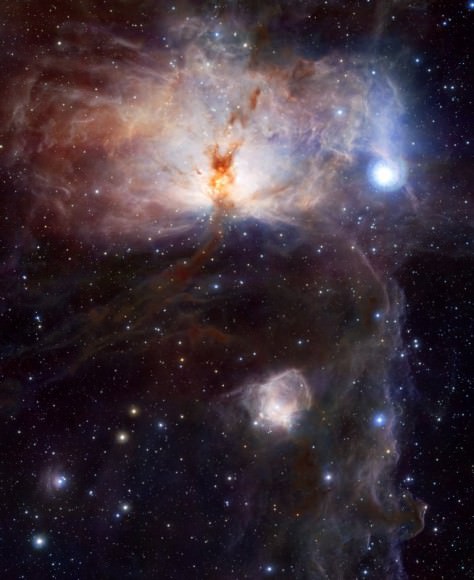Water on the Moon Revisited
Undoubtedly, one of the biggest space news stories of 2009 was the double news story of finding water on the Moon. First, in September, scientists from three different space missions announced they had detected widespread water across the surface of the Moon. Then in November, the LCROSS science team held a press briefing to announce they had detected "buckets" of water inside the crater the LCROSS impactor created inside Cabeus Crater on the lunar south pole. On the January 2 edition of 365 Days of Astronomy, I discuss the the findings and include audio clips from the press conference and soundbites from the scientists. Check it out, and I hope you enjoy it!
Also, in case you haven't heard, the 365 Days of Astronomy podcast is continuing in 2010, and we are still looking for podcasters throughout the year. So far, over 200 days have been spoken for, but that still leaves about 165 other days to schedule. To find out more, visit the 365 Days of Astronomy website, or listen to me discuss the podcast on the January edition of The Jodcast.
Blue Moon Eclipse Photos from Santhosh Nandakumar
We couldn't see the eclipse from my house on Vancouver Island, but Santhosh Nandakumar was kind enough to send in this sequence of images of the eclipse from Coimbatore, TN, India.
MN112 – A New Luminous Blue Variable Found From Its Nebula?
Luminous Blue Variables (LBVs) are a rare class of extremely massive stars that teeter on the very edge of being stable. The most famous of this class of stars is the well studied Eta Carinae. Like many other LBVs, Eta Carinae is shrouded in a nebula of its own making. The instability of the star causes it to throw off large amounts of mass even during its brief main sequence lifetime. What makes these stars so unstable is an open question which has been difficult to answer do the the paucity of known LBVs. Given that the initial mass function predicts that such massive stars should be rare, this is not surprising, but identifying these stars is often made even more difficult due to the reddening caused by their nebulae.
However, an international team working from Russia and South Africa proposes that the nebula itself may be able to help identify potential candidates of LBVs. (...)
Read the rest of MN112 – A New Luminous Blue Variable Found From Its Nebula? (392 words)
New Year's Eve Blue Moon Eclipse from Cornwall
Happy New Year! Thanks to Nathanial Burton-Bradford for sharing his photo of the New Year's Eve Blue Moon Eclipse. "Very hazy high level clouds over Cornwall so not very clear, unfortunately," Nathanial wrote this morning. But beautifully breathtaking nonetheless!
Onward to 2010!
New Year's Resolution: Find the Mars Polar Lander
(...)
Read the rest of New Year's Resolution: Find the Mars Polar Lander (181 words)
NASA Science News for December 31, 2009
NASA's Mars rover Spirit is about to mark six years of unprecedented science exploration and inspiration for the American public. However, the upcoming Martian winter could end the roving career of the beloved, scrappy robot.
FULL STORY at
http://science.nasa.gov/headlines/y2009/31dec_uncertainfuture.htm?list1035898
NASA Science News for December 29, 2009
This week, for the first time in almost twenty years, there's going to be a Blue Moon on New Year's Eve.
FULL STORY at
http://science.nasa.gov/headlines/y2009/29dec_bluemoon.htm?list1035898
NASA Science News for December 23, 200۹
The solar system is passing through an interstellar cloud that physics says should not exist. In the Dec. 24th issue of Nature, a team of scientists reveal how NASA's Voyager spacecraft have solved the mystery.
FULL STORY at
NASA Science News for December 18, 2009
NASA's Cassini Spacecraft has captured the first flash of sunlight reflected off a lake on Saturn's moon Titan, confirming the presence of liquid on the part of the moon dotted with many large, lake-shaped basins.
FULL STORY at
http://science.nasa.gov/headlines/y2009/18dec_titanglint.htm?list1035898
NASA Science News for December 17, 2009
A continent-wide network of all-sky cameras has photographed a never-before-seen phenomenon: colliding auroras that produce explosions of light. The must-see images have solved a long-standing mystery of Northern Lights.
FULL STORY at
http://science.nasa.gov/headlines/y2009/17dec_whenaurorascollide.htm?list1035898
Galaxy Zoo is Expanding to Include a Whole New "Zooniverse"
Galaxy Zoo has been an enormously successful citizen science project; so much so, that other astronomers, as well as scientists from other disciplines, have taken notice and now they want to get in on the act of having the public help make discoveries about our world and Universe. Today, the Galaxy Zoo team has launched Zooniverse. This new website will be a platform, or "home" to a plethora of new science projects where the public can take their pick of where and how they can make meaningful contributions and discoveries.
(...)
Read the rest of Galaxy Zoo is Expanding to Include a Whole New "Zooniverse" (683 words)
First (of many) Gorgeous Pictures from the New VISTA
Well, the WISE infrared all-sky satellite may be delayed until Monday, but the new infrared southern sky survey telescope VISTA (Visible and Infrared Survey Telescope for Astronomy) right here on Earth has gone online and released its first few gorgeous pictures.(...)
Read the rest of First (of many) Gorgeous Pictures from the New VISTA (443 words)
Forming Planets Around Binary Stars

Fanciful science fiction and space art frequently depict the lovely visage of a twin sunset where a pair of binary stars dips below the horizon (think Star Wars). While it has been established that planets could exist in such a system by orbiting in resonances, that only holds true for fully formed planets. Can forming star systems even support an accretion disk from which to form planets? This is the question a new paper by M. G. Petr-Gotzens and S. Daemgen of the European Southern Observatory with S Correia from the Astronomiches Institut Potsdam attempts to answer.
(...)
Read the rest of Forming Planets Around Binary Stars (460 words)
Spirals, Tides, and M51

Spiral galaxies are undoubtedly one of the most beautiful structures in the universe. Yet, their simple elegance belies a complex nature. How do such structures not "wind up" and what causes them in the first place? The answers to these questions is a long standing challenge. Under one model, spiral structure is created by spiral density waves. In another, they are induced by tidal interactions. It is this approach that is explored in a new paper by Dobbs et al., accepted for publication in the Monthly Notices of the Royal Astronomical Society. Specifically, the authors attempted to use modeling of tidal forces to recreate the structure of the spiral arms on the grand design spiral, M51.(...)
Read the rest of Spirals, Tides, and M51 (732 words)
Phobos and Deimos Together At Last!
ESA's Mars Express orbiter took images last month of Mars two moons, Phobos and Deimos. This is the first time the moons have been imaged together in high resolution, but as Emily Lakdawalla points out on Planetary Blog, not the first time the two have been imaged together: the Spirit rover did it back in 2005! But these new image definitely provide a ‘wow’ factor, as well as helping to validate and refine existing orbit models of the two moons.
(...)
Read the rest of Phobos and Deimos Together At Last! (270 words)







